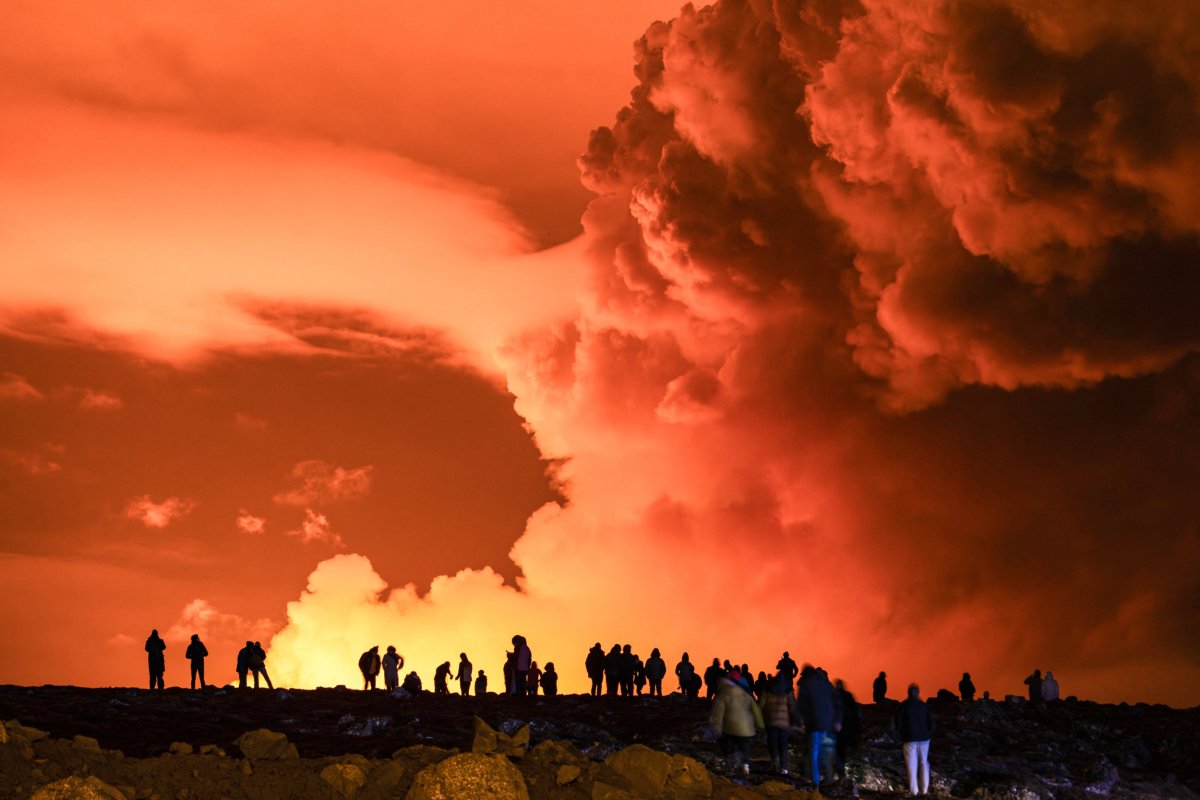Scientists have warned there may be further volcanic activity at Sundhnúkur in Iceland, after reporting that more magma may soon breach the surface.
The ongoing eruption, which began on March 16, is the fourth in a series of eruptions that started when magma began accumulating beneath Svartsengi, on the Reykjanes Peninsula, in October 2023. It first erupted in December 2023.
It unleashed a massive lava flow that caused multiple evacuations and razed several houses in the nearby fishing town of Grindavik.
Now, the Icelandic Meteorological Office has warned that increased pressure and ground lift have been noted in the area, which could mean that magma is refilling the chambers below the surface.
The continued magma accumulation beneath Svartsengi increases the likelihood of another magma propagation–a sudden and large flow of magma out of a magma reservoir. Magma is molten material produced from the melting of the Earth's mantle or crust.
This could lead to lava erupting from different surface fissures within the coming days or weeks, or the current eruptive crater could grow larger due to a sudden increase of lava flow.
"At the beginning of April, ground uplift began to increase anew, and a similar volume of magma is now being erupted at Sundhnúkur as is accumulated in the reservoir beneath Svartsengi, causing increased magma pressure," the Icelandic Met Office said in a statement.

"The current development is new, which is an ongoing volcanic eruption with a relatively stable lava flow at Sundhnúkur crater row at the same time as ground is uplifting in Svartsengi."
It added: "If magma accumulation continues at a similar rate, the likelihood of another magma propagation increases in the coming days or weeks, even though an eruption is still ongoing.
"Magma propagation from the reservoir during an ongoing eruption has thus far not been seen before in the area. Therefore, more uncertainty is on the development of the activity in the next days or weeks."
New eruptive fissures could open in the area between Stóra-Skógfell and Hagafell. As a result of the uncertainty caused by the increasing pressure beneath the surface, the Met Office has increased the hazard rate in several zones from 'low' to 'considerable'.
According to the meteorologists, more than 6 million cubic meters of magma is estimated to have accumulated in the magma reservoir beneath Svartsengi since the last eruption started on March 16. Previous eruptions have occurred when between 8 and 13 million cubic meters has been added to the reservoir.
Gas emissions from the eruption also pose an ongoing hazard to locals, who are being advised to monitor the air quality in the region.
Sundhnukur has been erupting for four weeks, making it the second-longest in recent years for Iceland. The 2021 Fagradalsfjall eruption lasted for six months.
Do you have a tip on a science story that Newsweek should be covering? Do you have a question about volcanoes? Let us know via science@newsweek.com.
Uncommon Knowledge
Newsweek is committed to challenging conventional wisdom and finding connections in the search for common ground.
Newsweek is committed to challenging conventional wisdom and finding connections in the search for common ground.
About the writer
To read how Newsweek uses AI as a newsroom tool, Click here.








